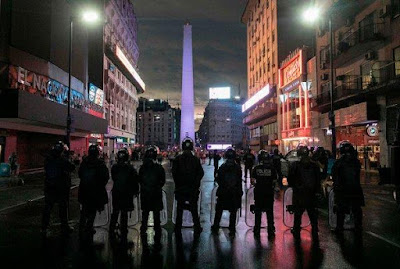
"For a brief period in the early 1960s, a group of choreographers, visual artists, composers, and filmmakers gathered in Judson Memorial Church, a socially engaged Protestant congregation in New York’s Greenwich Village, for a series of workshops that ultimately redefined what counted as dance. The performances that evolved from these workshops incorporated everyday movements—gestures drawn from the street or the home; their structures were based on games, simple tasks, and social dances. Spontaneity and unconventional methods of composition were emphasized. The Judson artists investigated the very fundamentals of choreography, stripping dance of its theatrical conventions, and the result, according to Village Voice critic Jill Johnston, was the most exciting new dance in a generation. ..."
MoMA (Video)

Peter Moore’s photograph of Trisha Brown and Steve Paxton in Brown’s Lightfall. Performed at Concert of Dance #4, Judson Memorial Church, January 30, 1963.
2017 August: Judson Dance Theater
















































